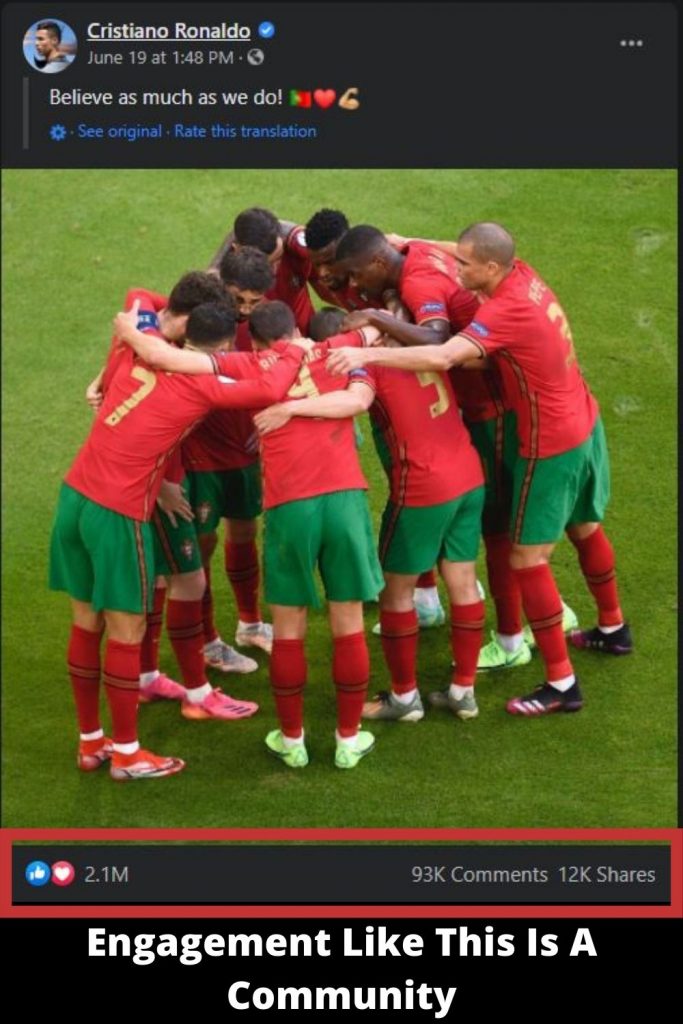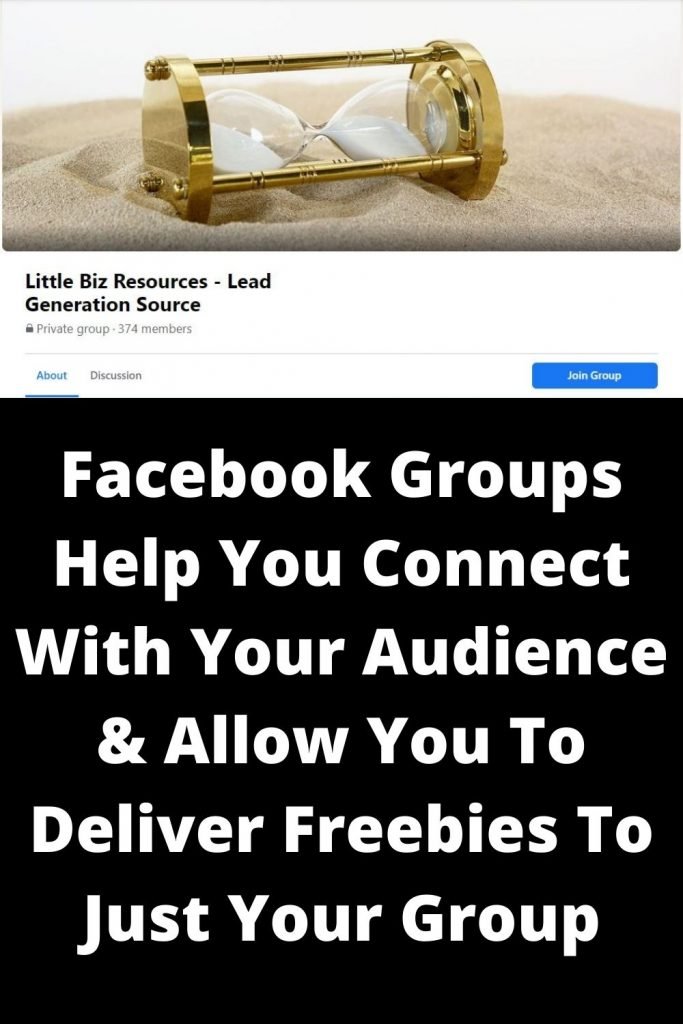5 Ways To Use Facebook For Marketing Your Business
If you are looking for ways to use Facebook for marketing your business, you’re in the right place! Believe it or not, there are more than 60 million active Facebook business pages!
With a user base over 2 billion people worldwide, it makes sense that business leaders have an audience on Facebook and choose it for one of their marketing methods.
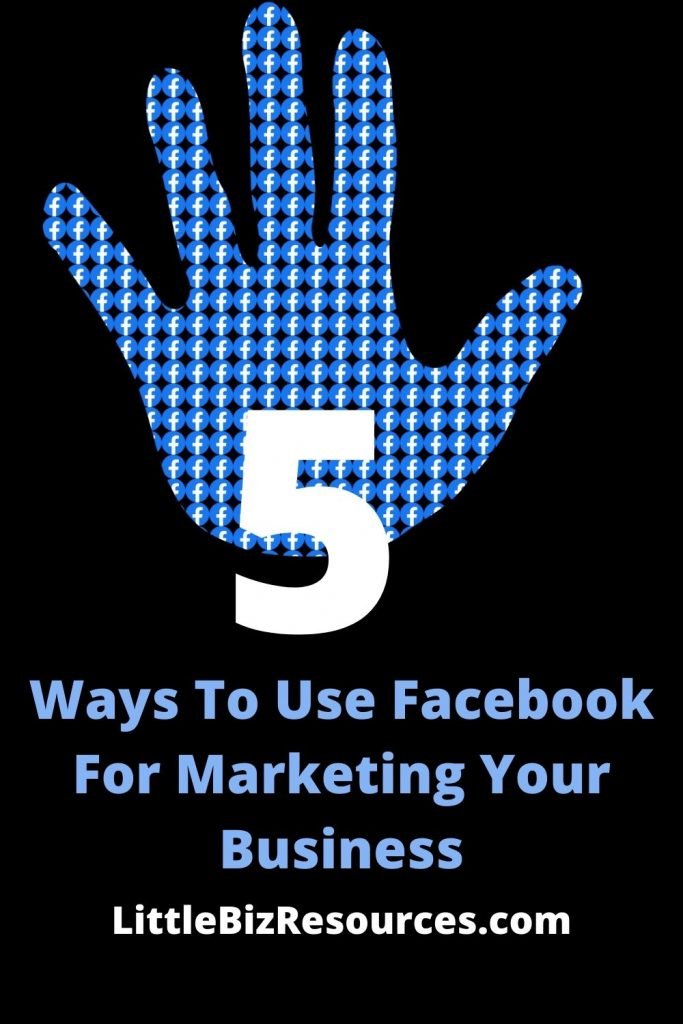
In the article “How Do I Start Marketing on Facebook”, I cover the topics Start With Your Personal Facebook Profile, Create A Facebook Page, Get Likes For Your Facebook Page, Post Content Relevant to Your Audience, and Advanced Facebook Marketing Strategies with Automation.
For this article, we’re going to focus on 5 specific ways to use Facebook for marketing your business. Each of these are clickable if you want to jump to the section!
♦#1 – Drive Traffic To Your Articles/Blog Posts
♦#2 – Drive Traffic To An Opt-In/Freebie/Offer
♦#3 – Create A Facebook Group To Engage Your Followers
♦#4 – Live Stream Video To Capture New Followers & Build A Relationship
♦#5 – Use The Facebook Pixel to Capture Audience Data
♦#6 – BONUS: Use Messenger To Expand The Audience Relationship
#1 - Drive Traffic To Your Articles or Blog Posts
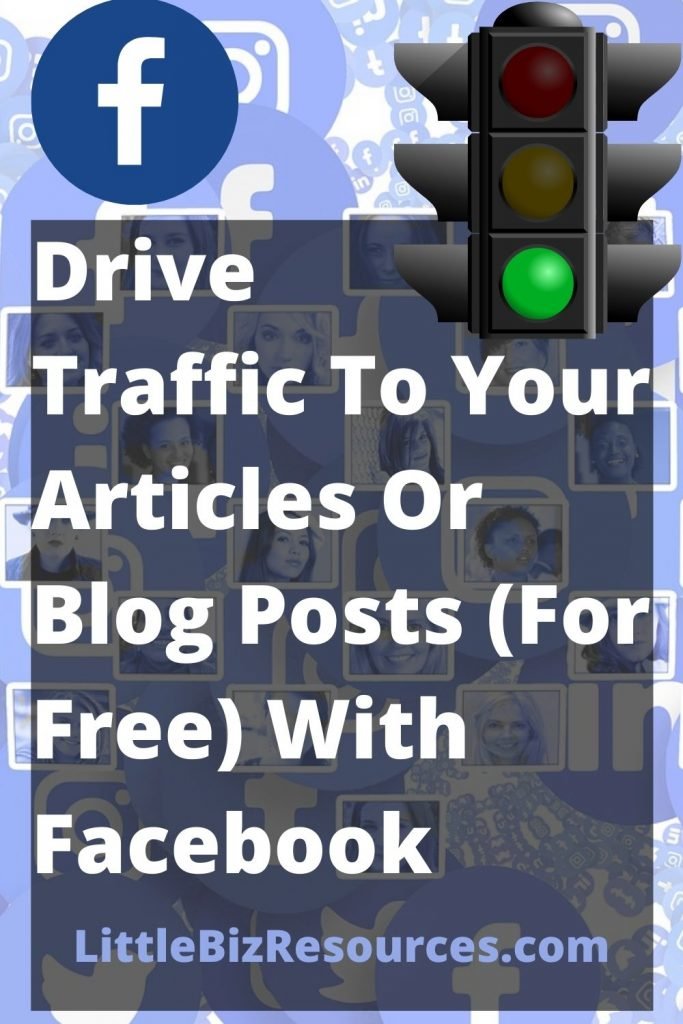
If you’re familiar with Facebook, this one may seem a little obvious…but, there are a few things to keep in mind.
When you post a link on Facebook, the user ends up leaving Facebook. So, Facebook will most likely (and yes, we’ve tested this and found it to be true) minimize your reach.
So, why use Facebook to drive traffic to your articles and blog posts if it isn’t going to reach many people?
Build Engagement On Your Facebook Page
You should use the same copywriting strategies on your articles and blog posts that you use for any marketing. Not sure how to create compelling titles? I recommend this free book “Copywriting Secrets” (just pay shipping).
If you have a compelling title, people will engage with the post (like, comment, share, click the link). Even if the post takes people off Facebook, enough engagement from your audience will help the momentum of the free/organic reach.
By building engagement on your posts, more people will SEE more posts. The more engagement, the better the reach and the more your other posts will get shown.
Bottom line: When your audience engages on the posts on your Facebook page, you reach more people and drive more traffic.
Your Followers Need Updates

Back in “the day” (early 2000’s), many people used RSS (Really Simple Syndication) feeds to receive updates from their favorite news sites and blogs. Today, RSS feeds are less popular with primarily hard-core and business professionals integrating RSS with their needs.
Even before RSS started to slip away from popularity, most sites offered an email option. Even now, many blogs still offer a method to sign up to their email list for notifications.
Unfortunately, a continued lack of standard in email marketing (along with many bad actors) have led to a massive decrease in valid emails and people signing up.
If you can’t get people on your email list, how do you update them? With your social media accounts, of course – and Facebook remains one of the top used social media outlets.
*One thing to note – Facebook decides when and who to show your posts. Many posts can take several days before they show up to your followers. So, don’t post anything time specific! In fact, if you offer time specific offers, that’s a great way to encourage email signups.

Above is an example of a post that my city placed on Facebook last year during a power outage…which I couldn’t even access because the cell towers were overloaded. I think a text message would have been better in this case (Messenger didn’t work, either…I tested it for fun…and because there was nothing else to do with power and internet out).
Social Proof and Community
Facebook gives your audience an opportunity to engage with others about the content (social proof). There seems to be some sort of permission granted once others have commented on a post. As you increase engagement, even more will engage. All of this adds up to significant social proof.
Not everyone is a commenter, but if you get a few people engaging in a back and forth discussion about your content – you’re going to improve your reach and get new followers.
Comments on blog posts and articles are almost pointless these days, but letting people connect on social media about your content is a great way to help spread the word about your content.
If you are lucky, you’ll even start to build a community of people that engage and help you promote your content.
Do It For The SEO (Search Engine Optimization)
Finally, those of you that are into SEO (search engine optimization), you’ll appreciate that Facebook has a domain authority of 96.
Additionally, even though search engines like Google claim that social media doesn’t play a role in ranking – SEO professionals regularly reference social signals as an indirect ranking factor.
So, getting the link back and the traffic from Facebook can help with SEO efforts with backlinks from a domain authority of 96 and less directly from the social signals.
#2 - Drive Traffic To An Opt-in, Freebie, or Offer
This can be the same as driving traffic to a blog post (if you’re sending traffic to a link, you’re sending traffic to a link). Yet, your opt-in, freebie, or offer does not necessarily need to take people OFF of Facebook.
A quick side note before I dive into how to do it without a link – any type of opt-in page/sales page, etc., will trigger a different reaction from Facebook over an Article or Blog Post. For example, Facebook knows when you’re sending traffic to an eCommerce site (they use the micro-data from your page to help the Facebook algorithm understand what the page is about).
So, while it’s sort of the same because your using a link for your opt-in page/sales page…it’s also NOT the same because CONTENT will have a different (and hopefully better) reach than linking to something that captures the customer’s information. If you’re having trouble with your reach – it might be because of your site or because you need LESS posts with links.
Many marketers prefer to use some sort of funnel software or landing page software. As mentioned in the prior section, placing a link in your post will start you out with a lower reach (overcome this with engagement). Instead of providing a link that takes the person off of Facebook, consider some alternatives:
♦Send the user to Messenger – we’ll expand on the messenger options later in Bonus #6, but you can use an auto reply (in the Facebook Page Settings) to provide automated info.
♦Send the user to a Facebook Group – this leads to #3, so I’ll keep it short and sweet. You can send a user to your Facebook Group to get more info on the post topic.
♦Invite the user to comment on the post for more information, then use a Messenger Bot to send them an instant message with details (more on this in #6 as well).
In the past, I would have had a few additional options for email signups and giving away freebies, but those options have been removed from Facebook effective 2020 (like utilizing notes…but let’s not talk about that since FB took it away). These remaining options are still a GREAT way to avoid using a link off Facebook.
#3 - Create A Facebook Group To Engage Your Followers
A Facebook Group is an excellent way to let your audience engage with each other, but there are some challenges.
*Effective June 16th, 2021 FB made some changes to Groups and the tools available – but it’s too early to see how this changes the effectiveness of groups…and it should be EASIER to utilize groups, according to FB.
Over the years, Facebook has changed the organic reach (how many people see the posts) even in Facebook groups. You and the user have very little control over this – except that if the user engages with that group, they will see more posts. If they do NOT engage with posts, they will stop seeing posts.

Facebook groups act a lot like pages, except you ask people to actually join the area. If you make the group private, this lets people post without worrying about the rest of the world seeing the post (but other group members CAN see these posts). Additionally, a private group lets you restrict members from sharing the post outside of the group.
When I first started the Little Biz Resources group, we had some good activity. Then, I got sick and it took me several months to recover (this has actually happened a few times while I’ve had the group). Not only did the reach of the posts decrease because of Facebook changes, but lower activity in the group will cause people to stop seeing your posts (especially if THEY stop engaging).
Tip: Strive for consistent activity by posting daily through scheduling or adding an admin or virtual assistant.
As the admin of a Facebook group, you can schedule content. I recommend you do what you can to create engaging posts, respond to questions, etc. It’s a lot of work – but if you are in an active niche, there will be plenty of other people also engaging and helping maintain that reach.
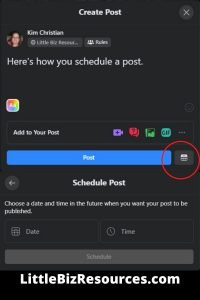
One significant benefit of the Facebook group is the ability to make the group private. You can upload videos (even live videos), documents, and other special information that is exclusive to group members. This makes people feel SPECIAL.
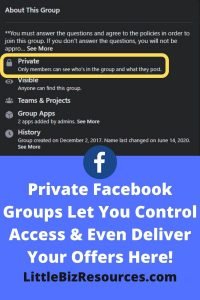
Additionally, Facebook Groups has a “Guides” section (formerly, this was named Units). If you don’t have a membership area separate from Facebook (which I do recommend you have a membership area eventually that is separate from Facebook – you never know what could happen to your group), you can use the Guides section to provide your free courses, videos, etc.
![]()
For people to join your group, you can require them to answer questions to join. Then, you get to approve them based on the questions.
This is a manual way of collecting emails without taking the person off Facebook (ask them for their email as a contingency to join, but you will need to manually add them to your list…or, you can provide a link and let them know they need to join your list and they provide their email for you to verify).
I do not manually collect emails. Instead, I invite potential members to sign up to the free membership area – but I’ll be changing this to an opt-in for something else amazing and easier to consume quickly.
#4 - Live Stream Video To Capture New Followers & Build A Relationship
Live streaming is just doing a presentation and transmitting over Facebook at the same time. Back in the day (well, a few years ago), it was rather difficult to do this from anything but an iPhone.
Today, you can use any smartphone or computer. Maybe other devices, but I make no promises.
I use a software that lets me pre-record videos (my daughter is only quiet when she is sleeping…so, that’s when I get to record videos). Since it is not very common to have people online in the middle of the night, I record the videos and schedule them to stream the next morning.
Instead of just using Facebook, I stream to my Facebook Page, Facebook Group, YouTube, Periscope (owned by Twitter), and sometimes Instagram though it takes a little more work). There are dozens of other streaming platforms that may work for you as well. If you are interested in live streaming to multiple platforms like this, I recommend you take a look at this tool.
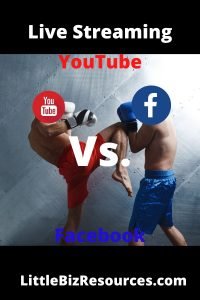
Facebook and YouTube like to compete when it comes to videos. If you were on Facebook as a user several years ago, when a YouTube video link was posted in the Facebook post…it auto played the video!
That was short lived as Facebook introduced their own video capability. Now, only uploaded videos on the Facebook platform auto play (another reason I use a multi-platform approach).
YouTube started their live streaming in 2006, launching a world of opportunity. Facebook eventually released streaming in 2016. Why? Because people LOVE to watch their content live, or as soon as possible (this is why public television continues to exist…that, and there are still plenty of people that hate paying for their entertainment).
Looking back, it’s easy to point at ads as the reason. Both platforms desire to capture as many people on their platform so they can serve their users ads and make money.
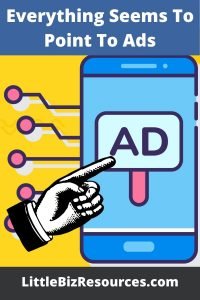
Why does this matter to you? Both Google (they own YouTube) and Facebook have invested A LOT of money, time, and other resources into building up video assets. Video is a critical part of our society now and users consuming video content just keeps increasing. Both platforms have found ways to encourage their business partners (that’s you) to use LIVE streaming because people like it.
On Facebook, you can engage with your audience live – just like if you were on a live webinar. Plus, Facebook has a section where people can go and browse active and recent live videos. To add the icing on top, live video tends to get a better reach than uploaded. Most likely because of reactions coming in during the stream – letting Facebook know your content is good.
For marketing purposes, here are the core reasons for Facebook live streaming:
♦Engage live with your audience
♦Benefit from people finding you from the search feature for live videos
♦Get a potential boost in visibility to your live videos and expand your reach
If you are doing Facebook marketing, live streaming should definitely be a part of your strategy!
#5 - Use The Facebook Pixel To Capture Audience Data
The Facebook pixel is one of those mysteriously miraculous marketing tools, which is also exceptionally simple to install now.
Yes, several years ago this was difficult to utilize. Today, it’s one of the easiest pieces of tracking code you can install on your website. It’s called a “pixel” but it’s really just a code you place on YOUR website. When you set up your pixel, Facebook walks you through everything now.
The core reason to use the Facebook Pixel is to capture your audience and eventually run ads. Now, don’t stop reading because you don’t think you’ll ever run ads!
Retargeting (ore remarketing) is one of the LEAST expensive type of ad you can run. Why? Because you target an audience that has already been exposed to the topic. Now, retargeting/remarketing is a whole article on it’s own – but this is one of the easiest ways to run ads later. Just get the code on your site now.
What You Need To Know About The Facebook Pixel
A few things to consider about your pixel.
- It can only go on digital assets you own. So, you can’t put the pixel on your Amazon products that you sell (I know, that would be phenomenal). You need to own the hosting and have the capability to add the code to your website.
- You only need one pixel. There’s a lot of strategy about creating pixels for different reasons. Seriously, you only need one pixel…unless you are following someone that teaches you a different strategy (and it’s not the old strategy of a pixel per page). For the most part, the current guidance from Facebook is to have one pixel per website. At the time of this article, Facebook is actually updating their requirements for pixel data tracking – so, you definitely want to OWN the website your pixel goes on. They are checking now!
- If you plan on running ads, you should follow someone that knows what they are doing. Facebook ad requirements, restrictions, and general silliness changes regularly. Account shut downs are the norm now (not that you’re doing something wrong, it’s definitely Facebook being a meanie). For general Facebook ad training (not for affiliate marketing), I recommend THIS FREE TRAINING. If you are an affiliate marketer and want to run Facebook ads, you need to see Robby’s free training HERE.
Bottom line, get the pixel on your website for later on – this is one of the most beneficial types of ads you can run. Even if you don’t plan on running ads, you might change your mind later and you’ll want the data!
#6 - BONUS: Use Messenger To Expand The Audience Relationship
The reason I left this as “bonus” is because technically “Messenger” is separate from Facebook. While still owned by Facebook, it branched off into its own business a few years ago. Additionally, you can do Facebook marketing and never use messenger – so, this is above and beyond traditional Facebook marketing.
What Is Messenger?
Facebook implemented an internal messaging system called Messenger. This gave Facebook users the opportunity to connect with other users and send private messages (frequently called “IM”, instant message or “PM” for private message).
Now, users can even send a message to pages on Facebook…as long as you turn that setting on for your page.
I cover some advanced strategies using Messenger in the article “How Do I Start Marketing On Facebook”, so I’ll just cover the general information here and you can check out details there.
Messenger Marketing
I hinted earlier that you can use Messenger to deliver content. While you can use an automated reply to give people instructions, I highly recommend against sending a URL in the automated response.
Instead, I recommend you encourage additional interaction. That means you need a messenger bot.
I use 2 different messenger bots on my pages (and neither of them work 100% of the time). One is a high-end BOT and one is a one-time fee. The high-end bot is much easier to use, but has a monthly fee. The one-time fee takes a little more to learn up front, but you can do just about all the same stuff…just with more of YOUR effort to make things work.
If you’re interested, take a look at the high-end BOT HERE, or the one-time fee one HERE.
Here are a few things you can do with these Messenger bots.
- Send a PM in Response To Comments On A Post: Yes, there is a strategy and guidance for this, but the general idea is that you send a private message to your audience that engage with your post through comments. Messenger bots do NOT respond publicly to the comment. If you want a tool that does that, you should check out this amazing tool here.
- Messenger Bots for engagement: A good example of an engagement bot is a quiz or an application process. You can combine this with the first one and create an entire experience for your audience. By having a chain of question/answer in Messenger, you show engagement with the user. Then, at the end of the engagement, you provide the link. You’ve warmed up your follower and shown Facebook you aren’t just using Messenger to take the person off Facebook (and, you can still deliver the content through your Facebook group and keep the entire experience on Facebook if you choose).
- Messenger bots for customer service: This is usually the harder of the three to set up. Why? Because you’ll always have questions no one has asked yet. But, that’s ok! You can set up a general catch-all to help connect your audience with a live person when it comes time. Using Messenger for customer service will reduce the amount of time it takes for customer service by clearing out the common and easy questions.
You can review these ideas in more detail in the post “How Do I Start marketing On Facebook” or you can click HERE and go straight to that section on the page.
What Can You Do With Messenger?
Send a PM in Response To Comments On A Post: Yes, there is a strategy and guidance for this, but the general idea is that you send a private message to your audience that engage with your post through comments.
Messenger bots do NOT respond publicly to the comment. If you want a tool that does that, you should check out this amazing tool here.
Messenger Bots for engagement: A good example of an engagement bot is a quiz or an application process. You can combine this with the first one and create an entire experience for your audience.
By having a chain of question/answer in Messenger, you show engagement with the user. Then, at the end of the engagement, you provide the link.
You’ve warmed up your follower and shown Facebook you aren’t just using Messenger to take the person off Facebook (and, you can still deliver the content through your Facebook group and keep the entire experience on Facebook if you choose).
Messenger bots for customer service: This is usually the harder of the three to set up.
Why? Because you’ll always have questions no one has asked yet. But, that’s ok! You can set up a general catch-all to help connect your audience with a live person when it comes time.
Using Messenger for customer service will reduce the amount of time it takes for customer service by clearing out the common and easy questions.
Remember The Ultimate Goal Of Facebook Marketing
It is critical for you to keep in mind YOUR goal of Facebook Marketing. Yes, we need to make sure we understand what Facebook wants.
They set the rules for marketing on their platform. Yet, too many people get caught up in the fun of Facebook and forget the point of marketing with Facebook for BUSINESS is to make money.
Now that you have a better idea of how to use Facebook for marketing your business, if you have additional questions or want to expand more – watch this free training on How to Get Free Traffic From Free Facebook Pages on Autopilot.
You can also connect with us through the resources listed at the bottom of the page.
About The Author- Dr. Kim Christian

Thanks for taking the time to read my content! I am Dr. Kim Christian, but the only person that calls me that is my daughter when she’s pretending she’s opening a business!
Most people just call me Kim (or mommy when my daughter isn’t playing business owner).
My priority is to help other entrepreneurs and small business owners build sustainable online businesses (or for “real world” businesses, expand to online).
In addition to publishing articles, I have compiled a list of FREE TRAINING opportunities (click HERE to see that page). You will also find additional resources below!
To Your Success,
Dr. Kim Christian

